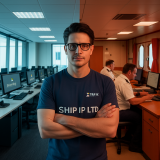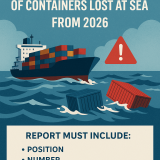The 20th annual Southeast Asia Cooperation and Training (SEACAT) exercise concluded Aug. 20, following 10 days of in-person and at-sea engagements that enhanced collaboration among Indo-Pacific partners and focused on shared maritime security challenges of the region.
SEACAT is a multilateral exercise that brought together 21 partner nations, interagencies, international and non-government organizations, designed to provide mutual support and a common goal to address crises, contingencies, and illegal activities in the maritime domain using standardized tactics, techniques, and procedures.
Ashore, the exercise involved a command post exercise at Singapore’s Changi Naval Base that served as a centralized hub for information sharing in the tracking of contracted merchant vessels simulating suspicious vessels of interests (VOIs) in seas throughout Southeast Asia.
Capt. Tim LaBenz, deputy commander of Destroyer Squadron 7 (DESRON 7), served as the Officer in Tactical Command, overseeing the operations in Singapore.
“Integrating U.S. Navy personnel and liaison officers from across the region and beyond, the multilateral collaboration required during SEACAT continues to build on well-established relationships in the maritime domain,” said LaBenz. “Exercises like these showcase the daily strides and highlight our shared focus to promote maritime security, all in support of a free and open Indo-Pacific.”
By aggregating information through maritime domain awareness (MDA) tools, cueing was provided to participant countries’ operations centers and maritime patrol and reconnaissance aircraft or surface assets. These assets made use of that information across the region to track, find and simulate boarding of the VOIs, with the goal of practicing and advancing a collective ability to enforce international rules, laws, and norms.
The exercise scenarios were designed to encourage countries to share information to enhance understanding of the operational environment, build capacity for humanitarian support missions, and uphold international laws and norms. As Indo-Pacific Command’s executive agent for counter-narcotics, Joint Interagency Task Force (JIATF) West provided intel support to participating countries, demonstrating their shared commitment to the international rules-based approach to address transnational organized crime.
“As the U.S. Department of Defense lead agency for counternarcotics in the Indo-Pacific, Joint Interagency Task Force West remains honored to participate in SEACAT year after year,” said Rear Adm. Charles Fosse, director, JIATF West. “SEACAT 2021 strengthened our intelligence-sharing partnerships with other military and law enforcement operational centers, enabling a unified effort to maintaining a free and open Indo-Pacific.”
Signifying the largest iteration to date, 21 nations participated, including Australia, Bangladesh, Brunei, Canada, France, Germany, India, Indonesia, Japan, Malaysia, Maldives, New Zealand, Philippines, South Korea, Singapore, Sri Lanka, Thailand, Timor-Leste, United Kingdom, United States, and Vietnam.
In all, SEACAT included 10 ships and more than 400 personnel. U.S. Navy participants included USS Tulsa (LCS 16), staff of DESRON 7, P-8A Poseidon aircraft assigned to Task Force 72, and personnel from Task Forces 73, 76, U.S. 7th Fleet, U.S. Pacific Fleet, Defense Threat Reduction Agency (DTRA) and JIATF West. Other organizations included United Nations Office of Drugs and Crime (UNODC), EU Critical Maritime Route Wider Indian Ocean (CRIMARIO), and Global Fishing Watch, with application of Women, Peace, and Security (WPS).
As the U.S. Navy’s destroyer squadron forward-deployed in Southeast Asia, DESRON 7 serves as the primary tactical and operational commander of littoral combat ships rotationally deployed to Singapore, functions as Expeditionary Strike Group 7’s Sea Combat Commander, and builds partnerships through training exercises and military-to-military engagements.
Under Commander, U.S. Pacific Fleet, 7th Fleet is the U.S. Navy’s largest forward-deployed numbered fleet, and routinely interacts and operates with 35 maritime nations in preserving a free and open Indo-Pacific region.
Source: https://maritimefairtrade.org/southeast-asia-maritime-exercise-puts-cooperative-maritime-security-first%EF%BF%BC/








